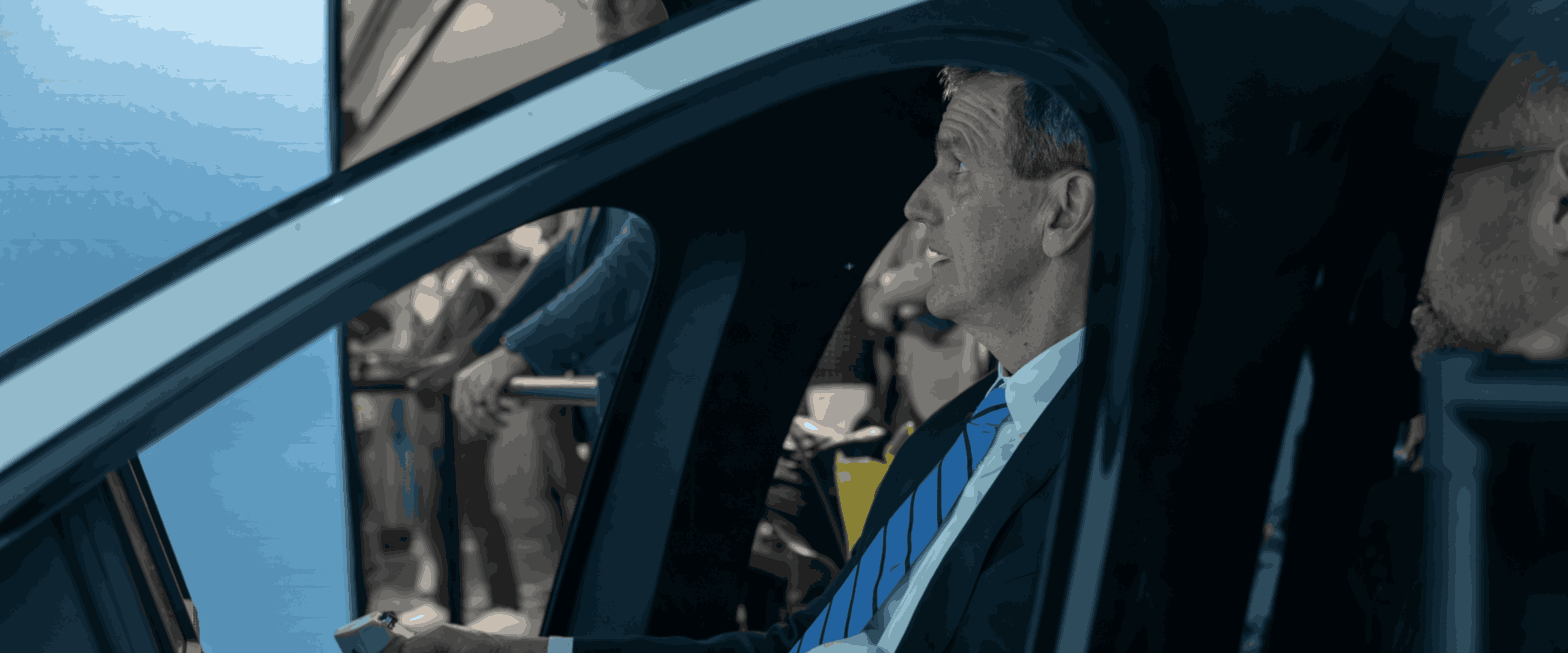We collect cookies. Read our privacy policy. Do you accept?
May 15, 2024
Legislation for the Next Century of Aviation
Former FAA chiefs from both parties unpack the agency’s new Congressional mandates

2024 marks a new era of aviation innovation with the passage of the FAA Reauthorization Act. Pictured: FAA Administrator Michael Whitaker flying Joby’s simulator at Vaughn College in New York City. Photo credit: Joby Aviation
May 15, 2024 — Co-authored by Michael Huerta and Dan Elwell. Huerta served as FAA Administrator from 2013 to 2018 and currently is a member of the Board of Directors for both Delta Air Lines and Joby Aviation. Elwell served as Deputy and Acting FAA Administrator from 2017 to 2020 and is currently a member of Joby’s Board of Advisors.
As former FAA leaders who helmed the agency for almost eight consecutive years, we believe today’s passage of the 2024 Federal Aviation Administration (FAA) Reauthorization Act is a moment of celebration for the U.S. aviation industry that harkens back to the creation of the agency in the 1950s. By directing the FAA to prioritize the commercialization of Advanced Air Mobility (AAM), this Congress has implemented foundational legislation that sets the stage for U.S. leadership in the next hundred years of aviation.
As part of reauthorizing the FAA for the next five years, Congress has included a mandate for the agency to prepare for the safe introduction of electric and hydrogen-electric aircraft into the National Airspace System. These aircraft, designed to be quieter and more sustainable than the airplanes and helicopters in the sky today, will reimagine our relationship with aviation and chart a course for the decarbonization of the sector.
Congress has directed the FAA to develop a safe, clear, and efficient route to commercializing these new aircraft. This includes:
- •Prioritizing the dedication of resources to the type certification of novel aircraft and propulsion systems
- •Finishing development of the Special Federal Aviation Regulation (SFAR) that covers the pilot training and operations of powered-lift aircraft
- •Modernizing and electrifying existing aviation infrastructure, with an eye towards the creation of the next generation of infrastructure, called ‘vertiports’
- •Updating the FAA’s existing bilateral aviation safety agreements with civil aviation authorities around the globe to ensure aircraft certified in the U.S. can be expediently introduced into foreign markets
This landmark legislation is a recognition of the progress that dozens of American companies, including Joby, have made to mature electric propulsion systems and new types of aircraft. By mandating the FAA to lean into AAM, Congress aims to ensure that the FAA will serve as a driving force for innovation and continued U.S. leadership while keeping safety at the heart of its mission.
This act of Congress places the United States at the forefront of the electric age of aviation, which will bring noise and emissions benefits to communities while creating manufacturing and aviation jobs. Efforts like the mass synthesis of sustainable aviation fuel are critical to reducing aircraft emissions in the near-term. Over the long term, the best solution is transitioning the industry to emissions-free fuel and propulsion systems. An enormous amount of technological development and commercialization must be done to achieve that goal, but the foundational policies and priorities are now in place to make it happen – and for the U.S. to lead the way.
Passage of the 2024 FAA Reauthorization Act is the result of close collaboration across the aviation industry, including key trade organizations like the National Business Aviation Association (NBAA), the General Aviation Manufacturers Association (GAMA), the Aerospace Industries Association (AIA), National Air Transportation Association (NATA), Association for Uncrewed Vehicle Systems International (AUVSI), Vertical Aviation International (VAI) and the Vertical Flight Society (VFS).
It is also a testament to the hard work of smart and capable experts within the House and Senate committees responsible for the success and safety of the U.S. aviation system. At a time when aviation needed cooperation and leadership from the brightest minds in the country, the U.S. Congress delivered.